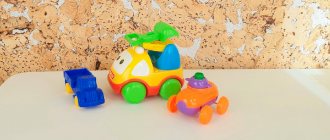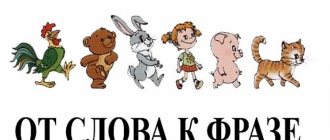How to choose an ADC product
Photo: Andrey Kolb
The choice of ADC means depends entirely on the capabilities of the individual child, so it is always an individual story. Even within the same category of devices: as we already know, everyone has their own communication books. A specialist will help you choose the optimal means - and yes, we didn’t misspell, exactly the means a . Because different ADC tools can perfectly complement each other: for example, a non-speaking child can use both gestures and pictures. If using gestures is difficult due to motor limitations, you can connect a communicator or an eye tracker - a special attachment with which the child can control what is happening on the computer with his eyes. Thanks to the fact that for several years we have been leading projects for the development of ADC, which are supported by the Sberbank Foundation “Investment in the Future”, the Presidential Grants Foundation and the St. Gregory Foundation, the Orange Penguin Foundation, many more tools have appeared in our registry and a certain experience has been formed in the use of such funds. A good diagnosis helps to choose the most convenient means for the child.
There are a lot of ADC tools; they can not only be combined, but replaced as the child’s capabilities develop. And for this, it is important, first of all, not to deprive the child of the opportunity to communicate and interact with the world: after all, living in peace and harmony is much easier when we understand each other.
What is ADC
Photo: Andrey Kolb
Alternative and complementary communication is a whole field of knowledge about various means of communication that are developed specifically for people who do not have speech or have difficulty with it. This topic includes two areas:
- Alternative communication was invented for people who have no speech at all - from birth due to developmental disorders, as a result of injury or a genetic disorder. For example, in people with severe multiple disabilities due to extensive damage to the nervous system: they may have intellectual impairments and may have difficulty understanding speech. There may also be major problems with articulation due to movement disorders.
— Additional communication helps people who have speech, but it is difficult. For example, at an early age, when speech starts slower and additional means are required that promote speech development. Augmentative communication is also suitable for people with specific disabilities: this happens with some children with autism, they, in principle, can pronounce individual words, but in some communication situations, where there are many different signals, they get lost, it is difficult for them to form phrases, and then the communicator, book or Another ADC tool can help build a phrase based on symbols.
Short games to stimulate a child's speech
Unfortunately, some parents do not attach importance to the child’s speech development, and later to the child’s delay in speech development, they try not to pay attention, and hope that “everything will go away on its own.” The “norms” for speech development have shifted significantly over the past few decades.
It is imperative to pay attention to the child’s speech. The least we can do is play simple and quick games with our child every day. Here is an example of these games.
- Pebbles. The child throws small pebbles and large beads into the water, making a sound like “glug-glug.”
- Indians. The child pronounces the sound a-a-a loudly and protractedly, clapping his hand on his lips.
- Ball. The child throws up a balloon with the sound “Uh”.
- Hedgehog. A child sticks matches and needles with the words “kol-kol-kol” into the molded hedgehog.
- Nails. The child “hammers nails” by hitting the buttons hard with a hammer and saying the sound “Bang.”
- Live sounds. "Hockey! “- the child waves the “stick” with the sound “xxxx”; “locomotive” - sharply unclenches his fists with the sound “pppppp”; “lid on the teapot” - taps his fist with his palm “bbbb”; “rain” - taps his fingers on the table “k-k-k”; “watch” - the finger swings in different directions: tut-tut; “pump” - puts his hands in lock, bends over with the sound “ssssssssssssssssssssssssssssssssssssssssssssssssssssssssssssssssssssssssssssssssssssssssssssssssssssssssssssssssssssssssssssssssssssssssssssssssssss."
Game “Teaching a doll to talk”
The speech game is intended for children from 10 months to 3 years to develop active speech.
Take a big doll. Place her in your arms. Let the child sit opposite you. Tell your child that he will teach the doll to talk. Ask him to say to the doll: “Ua”, “Lala”, “Mom”, “Baba”, “Dad”, “Agu”.
Make sure that the baby addresses the doll specifically. Move the doll's head as if agreeing. Speak in a thin voice for the doll, repeating the sounds that the little teacher makes.
Up to a certain point, the child in this game will pronounce words, imitating an adult. Only after 1.5 years will he be able to fully accept the rules of the game, that is, talk to the doll. Then the child will certainly like the role of a teacher, and he will willingly initiate “learning.”








